Key Takeaways
- Edge computing processes data at or near its source, reducing latency from seconds to milliseconds compared to cloud processing
- Businesses can save up to 30-40% on bandwidth costs by filtering and processing data locally before sending to the cloud
- Edge computing enhances security by keeping sensitive data local and provides operation continuity even during internet outages
- The edge computing market is projected to reach $43.4 billion by 2027 as more industries adopt real-time processing solutions
- EdgeTech Solutions offers comprehensive edge computing implementation services to help businesses transform their data processing infrastructure
.png)
“Guide to Edge Computing and Choosing …” from us.axiomtek.com and used with no modifications.
Edge Computing Explained: Processing Data Where It’s Created
Processing data where it’s created rather than sending it to distant cloud servers – that’s the simple yet revolutionary concept behind edge computing. In a world generating exponential amounts of data every second, the traditional model of sending everything to centralized data centers no longer makes sense for many applications. EdgeTech Solutions has observed that organizations implementing edge computing are experiencing dramatic improvements in response times and operational efficiency while reducing their network costs.
Edge computing represents a fundamental shift in how we think about data processing architecture. Instead of relying solely on centralized cloud infrastructure, edge computing distributes processing capabilities closer to where data originates. This approach is particularly valuable as the Internet of Things (IoT) expands, with billions of connected devices generating massive data volumes that would overwhelm traditional networks if all sent to centralized locations.
Think of edge computing as bringing the computing power to the data, rather than bringing the data to computing power. This reversed approach solves numerous challenges organizations face with cloud-only models, including latency issues, bandwidth constraints, and connectivity dependencies. By processing data locally, edge computing creates a more resilient, responsive, and efficient technological ecosystem.
The Definition of Edge Computing
Edge computing is a distributed computing paradigm that brings computation and data storage closer to the sources where data is generated. In practical terms, it means processing data on or near the device that collected it rather than sending that data to a centralized data center or cloud. This approach minimizes the distance data must travel, resulting in faster processing times and reduced bandwidth usage. Edge computing essentially extends the capabilities of the cloud to the logical extremes of a network, creating mini data centers positioned strategically where they’re most needed.
Why It’s Different From Cloud Computing
Cloud computing and edge computing represent different philosophies about where processing should occur. While cloud computing centralizes resources in massive data centers that serve users worldwide, edge computing distributes processing power across many smaller nodes located closer to users and devices. The cloud excels at handling complex workloads that require significant computing resources but aren’t time-sensitive. Edge computing, conversely, prioritizes speed and local processing for time-critical applications.
The two approaches aren’t mutually exclusive—most modern organizations employ a hybrid architecture. Time-sensitive data processing occurs at the edge for immediate decision-making, while aggregated data and more complex analyses are sent to the cloud. This balanced approach leverages the strengths of both paradigms: the responsiveness of edge computing and the powerful analytical capabilities of cloud infrastructure.
One key distinction is that edge computing significantly reduces the round-trip time for data. In cloud computing, data must travel to distant data centers and back—a journey that can take hundreds of milliseconds. With edge computing, processing happens in single-digit milliseconds, making it suitable for applications where even slight delays are problematic.
Why Edge Computing Matters Today
The exponential growth of connected devices has created an urgent need for more efficient data processing methods. By 2025, experts predict over 75 billion IoT devices will be operational worldwide, collectively generating over 79 zettabytes of data annually. This tsunami of information would overwhelm traditional network infrastructure if all processed in centralized locations. Edge computing provides the architectural solution to this data explosion by distributing processing across the network.
Reduced Latency: Processing in Milliseconds
Perhaps the most compelling benefit of edge computing is dramatically reduced latency. When applications require real-time or near-real-time responses, the milliseconds saved through local processing can make critical differences. For autonomous vehicles, industrial safety systems, or medical monitoring devices, these time savings aren’t just about improved performance—they can be matters of life and death. Traditional cloud processing might take 100-500 milliseconds for a complete data roundtrip, while edge computing can deliver results in under 5 milliseconds in many scenarios.
Bandwidth Savings and Lower Network Costs
The financial benefits of edge computing are substantial and measurable. By processing data locally and only sending relevant information to the cloud, organizations can reduce their bandwidth requirements by 30-40% on average. This filtering approach prevents network congestion and eliminates the cost of transmitting and storing low-value data. For companies with hundreds or thousands of connected devices, these savings quickly add up to significant budget reductions.
Consider a retail chain with surveillance cameras in 500 locations. Without edge computing, each camera might stream continuous footage to the cloud, consuming enormous bandwidth. With edge processing, the system can analyze video locally, only sending alerts and relevant clips when specific events occur (like after-hours movement). This selective transmission can reduce data transfer volumes by up to 95% while still delivering all critical information.
For businesses looking to stay ahead, understanding the emerging risks in cybersecurity is crucial as they implement such advanced technologies.
Enhanced Privacy and Security
Processing sensitive data locally rather than sending it across networks inherently improves security posture. Edge computing allows organizations to maintain stricter control over their information by keeping it within physical boundaries they manage. This approach is particularly valuable for industries handling regulated data like healthcare, finance, and government operations. When sensitive information never leaves the premises, the attack surface for potential data breaches is significantly reduced.
Edge computing also supports enhanced privacy by enabling data minimization principles. Instead of capturing and transmitting complete datasets, edge systems can extract only the necessary insights while discarding the raw data. For example, a smart camera system can detect when a restricted area has been entered without needing to record and store complete video of authorized personnel throughout the day. This capability helps organizations maintain compliance with privacy regulations like GDPR and CCPA.
More Reliable Operations
Edge computing creates inherent resilience by reducing dependency on constant internet connectivity. When processing occurs locally, systems can continue functioning even during network outages or connectivity issues. This independence from cloud connections is critical for applications in remote locations, transportation systems, or emergency services where internet access may be unreliable. The ability to operate autonomously during connectivity disruptions represents one of edge computing’s most valuable operational benefits.
Manufacturing facilities particularly benefit from this reliability aspect. Production lines equipped with edge computing capabilities can continue operating even if external network connections fail. The local processing systems maintain essential monitoring and control functions independently, preventing costly production halts that might otherwise occur with cloud-dependent systems.
Top Industries Transforming With Edge Computing
While edge computing offers advantages across virtually all sectors, certain industries are experiencing particularly transformative impacts. These early adopters are demonstrating the technology’s value through improved operations, enhanced customer experiences, and innovative new service offerings. Their implementations provide valuable blueprints for organizations considering their own edge computing strategies.
Manufacturing and Industrial Applications
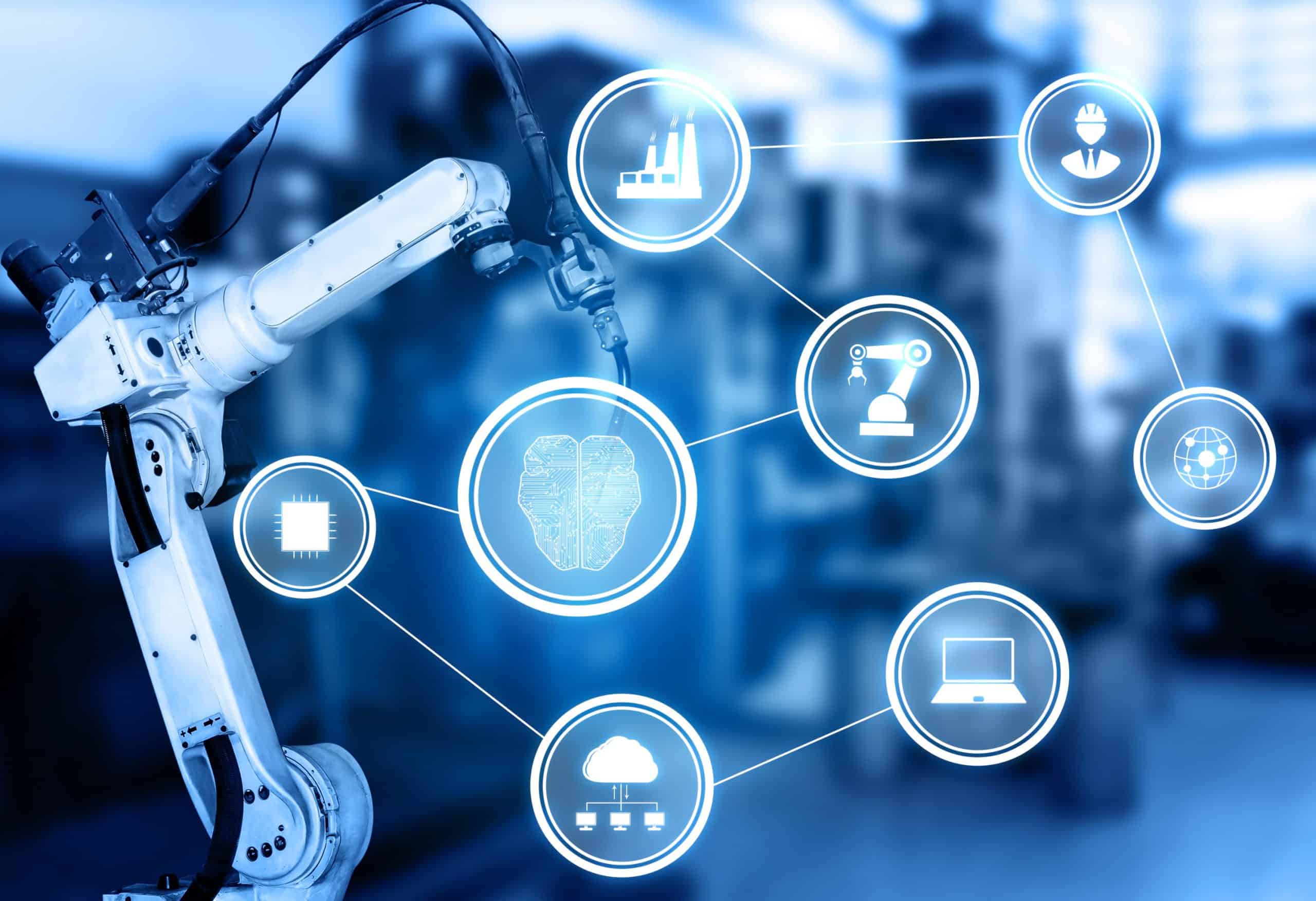
“Industries use Manufacturing Technology …” from itchronicles.com and used with no modifications.
Manufacturing has embraced edge computing more rapidly than perhaps any other sector. Factory floors now deploy edge systems for real-time quality control, predictive maintenance, and process optimization. These applications allow manufacturers to identify potential equipment failures before they occur, reducing downtime by up to 50% in some implementations. The millisecond response requirements of industrial automation make edge computing particularly valuable in these environments.
One major automotive manufacturer implemented edge computing across its assembly lines to analyze thousands of variables in real time during vehicle production. This system identifies subtle anomalies that might indicate quality issues, allowing immediate corrections rather than discovering problems during final inspection. The result has been a 35% reduction in defects and significant cost savings from reduced rework requirements.
Healthcare Monitoring Systems

“Respiratory Patient Monitoring | GE …” from www.gehealthcare.com and used with no modifications.
Healthcare providers are leveraging edge computing to enhance patient monitoring while addressing privacy concerns. Edge-enabled medical devices can analyze patient data locally, only alerting medical staff when potential issues are detected. This approach reduces alarm fatigue while ensuring critical situations receive immediate attention. For remote patient monitoring, edge computing allows systems to function even during temporary connectivity losses, maintaining continuous protection.
Hospitals implementing edge computing for patient monitoring report reduced false alarms by up to 75% while maintaining or improving their ability to detect genuine medical emergencies. This improvement significantly reduces clinician burnout and allows medical professionals to focus attention where it’s truly needed. Additionally, by processing sensitive health data locally, these systems better protect patient privacy and comply with strict healthcare data regulations.
Retail and Smart Stores

“Smart Store: The latest innovation from …” from www.planet-vending.com and used with no modifications.
Retailers are revolutionizing the shopping experience through edge computing applications that provide real-time inventory management, personalized customer experiences, and advanced security. Smart shelves with embedded sensors can track inventory levels continuously, triggering automatic reordering and preventing stockouts. Facial recognition systems at the edge can identify loyal customers (with appropriate consent) and alert staff to provide personalized service without sending identifying information to the cloud.
Transportation and Autonomous Vehicles
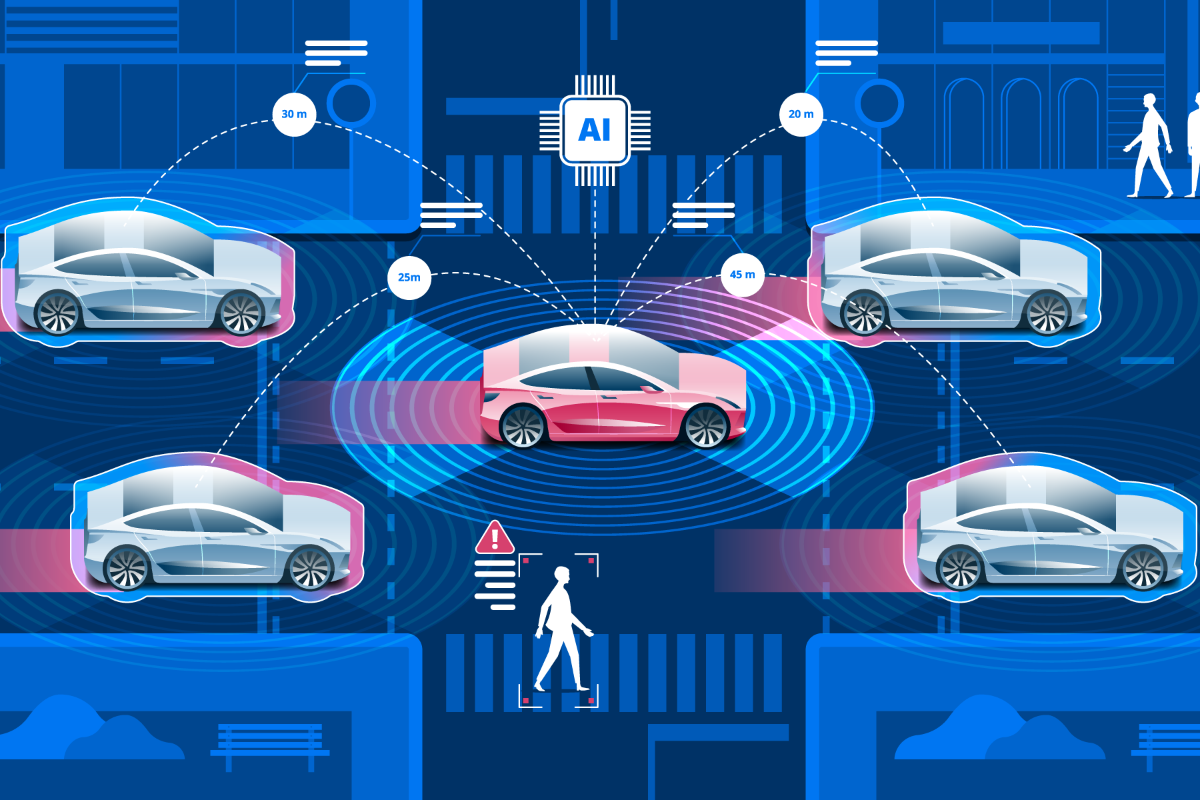
“Leaders eye autonomous vehicle benefits …” from www.smartcitiesworld.net and used with no modifications.
Autonomous vehicles represent one of the most demanding applications for edge computing, requiring instantaneous processing of massive sensor data. A self-driving car generates approximately 1-2 TB of data per hour from cameras, radar, LIDAR, and other sensors. Processing this data in the cloud would introduce unacceptable latency for critical safety decisions. Edge computing allows these vehicles to make split-second decisions locally while still leveraging cloud resources for mapping, traffic analysis, and fleet management.
Beyond passenger vehicles, the logistics industry has embraced edge computing to optimize shipping operations. Smart containers equipped with edge devices can monitor cargo conditions and make autonomous decisions to maintain optimal temperature, humidity, and other environmental factors. These systems operate independently even when ships or trucks travel through areas with limited connectivity, ensuring cargo integrity throughout the journey.
For anyone interested in purchasing affordable and durable dashcams in the US or UK.
The Physical Edge: Where Processing Happens
Edge computing isn’t a single technology but rather a spectrum of solutions deployed at various points between data sources and traditional data centers. This distributed architecture creates multiple tiers of processing capability, each optimized for specific requirements and constraints. Understanding these different tiers helps organizations design effective edge strategies that balance performance, cost, and complexity.
Edge Devices (Sensors, Cameras, Wearables)
At the furthest edge are the devices themselves – the sensors, cameras, wearables, and other data-generating equipment that interact directly with the physical world. Modern edge devices increasingly contain significant processing capability, allowing them to filter, analyze, and act on data without external systems. These “smart” endpoints represent the first tier of edge computing, handling time-critical functions while minimizing the data that needs transmission.
Industrial sensors exemplify this evolution toward intelligent endpoints. Where traditional sensors might simply transmit raw readings, modern edge-enabled sensors can monitor their own health, detect anomalies, and perform basic analytics before sending only relevant information upstream. This intelligence at the device level dramatically reduces bandwidth requirements while improving system responsiveness.
Edge Servers and Gateways
Edge servers and gateways form the second tier of the edge computing hierarchy, aggregating and processing data from multiple devices. These intermediate systems typically reside in the same facility as the devices they serve – on factory floors, in retail stores, or at cellular base stations. With significantly more processing power than individual devices, edge servers can perform more complex analytics, run sophisticated applications, and serve as local data storage repositories.
These systems often function as translators between diverse devices and protocols, creating standardized data streams that can be processed uniformly. This gateway role is particularly important in industrial environments where equipment from different generations and manufacturers must work together within a cohesive system. By handling this integration locally, edge servers simplify cloud architecture while improving system reliability.
Micro Data Centers
Micro data centers represent the most powerful tier of edge computing infrastructure. These self-contained systems include computing, storage, networking, and physical infrastructure (power, cooling, security) in compact, often portable enclosures. Typically deployed at locations like telecommunications facilities, commercial buildings, or manufacturing plants, micro data centers provide substantial processing capability without the expense and complexity of traditional data centers.
These facilities support more demanding workloads than smaller edge servers while maintaining the latency benefits of local processing. A single micro data center might serve multiple buildings in a campus environment or support an entire manufacturing facility. Their modular design allows organizations to scale capacity incrementally, adding computing resources precisely where and when needed rather than investing in centralized infrastructure.
When Real-Time Processing Becomes Critical
While reduced latency benefits nearly all applications, certain scenarios make real-time processing absolutely essential. In these cases, edge computing isn’t just about performance improvement—it enables capabilities that would be impossible with cloud-dependent architectures. Understanding these use cases helps organizations identify where edge investments deliver the greatest value.
Emergency Response Scenarios
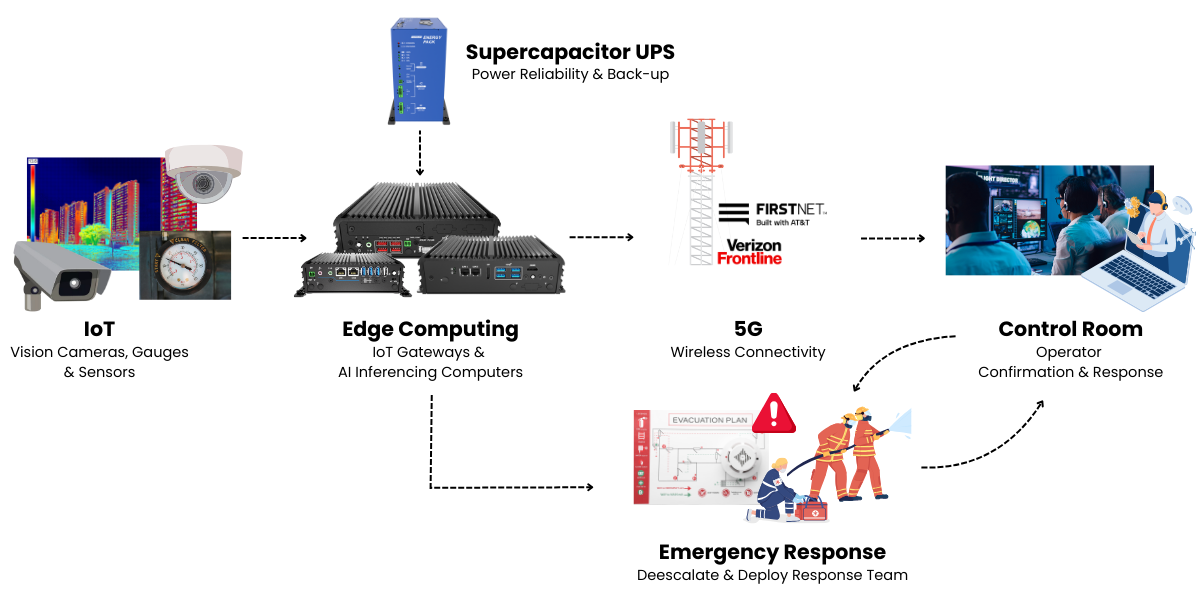
“Leveraging Edge Computing for Disaster …” from premioinc.com and used with no modifications.
During disasters or emergencies, network infrastructure often becomes unreliable or completely unavailable. Edge computing enables critical systems to continue functioning independently, supporting first responders and affected communities. Mobile edge computing units can be deployed to disaster zones, providing communications, data processing, and situational awareness tools even when traditional infrastructure has failed.
For small businesses looking to enhance their emergency response strategies, exploring the best AI tools and software can be a valuable step.
Medical devices in emergency settings particularly benefit from edge capabilities. Portable diagnostic equipment can process complex imaging data locally, allowing emergency physicians to make informed decisions without requiring connectivity to hospital systems. This independence can be lifesaving in field hospitals, ambulances, or remote locations where reliable connections aren’t available.
For a deeper understanding of the technological landscape, explore the emerging risks in cybersecurity that could impact these devices.
High-Volume Data Environments
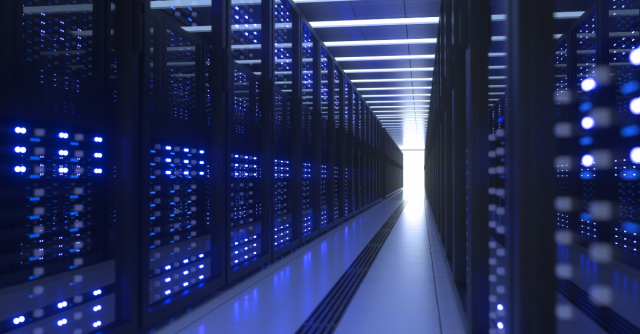
“High-Density Data Centers & Colocation …” from www.flexential.com and used with no modifications.
Some applications generate such massive data volumes that transmitting everything to the cloud becomes economically impractical or technically impossible. Video analytics represents a prime example, with a single 4K camera generating over 18 GB of data per hour. Edge computing allows these systems to extract meaningful insights locally, sending only relevant events and metadata to central systems.
Modern manufacturing facilities demonstrate this principle clearly. A semiconductor fabrication plant might contain thousands of sensors monitoring every aspect of the production process, collectively generating petabytes of data monthly. Edge systems filter this torrent of information, identifying patterns and anomalies locally while only forwarding significant findings for deeper analysis. This approach maintains comprehensive monitoring while keeping network and storage costs manageable.
For insights into how emerging technologies impact industries, consider exploring the top 2026 cybersecurity threats that are shaping the landscape.
Remote Locations With Limited Connectivity
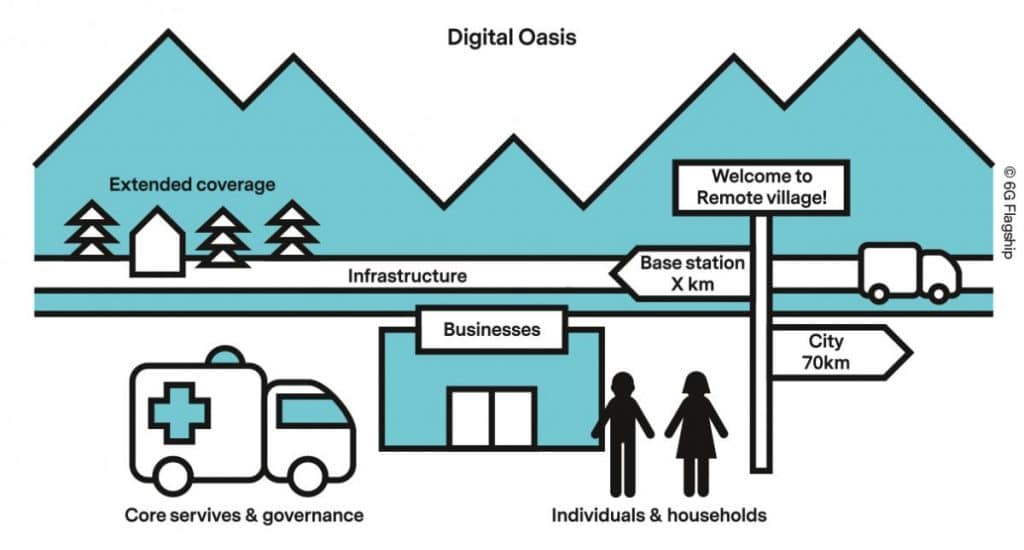
“Connectivity for remote areas – 6G Flagship” from www.6gflagship.com and used with no modifications.
Industries operating in remote locations face unique connectivity challenges that edge computing directly addresses. Mining operations, offshore oil platforms, agricultural settings, and remote research facilities often have limited, expensive, or intermittent internet access. Edge computing enables these operations to maintain sophisticated technology systems despite connectivity constraints.
To understand more about potential risks in these environments, explore the emerging cybersecurity threats that could impact remote operations.
Mining companies have become particularly adept at leveraging edge computing. Modern mines deploy autonomous equipment, environmental monitoring systems, and safety infrastructure that must function reliably regardless of connectivity status. Edge systems process sensor data locally for immediate operational decisions while synchronizing with corporate systems when connections are available. This hybrid approach ensures both safety and operational efficiency in challenging environments.
The Technical Architecture of Edge Computing
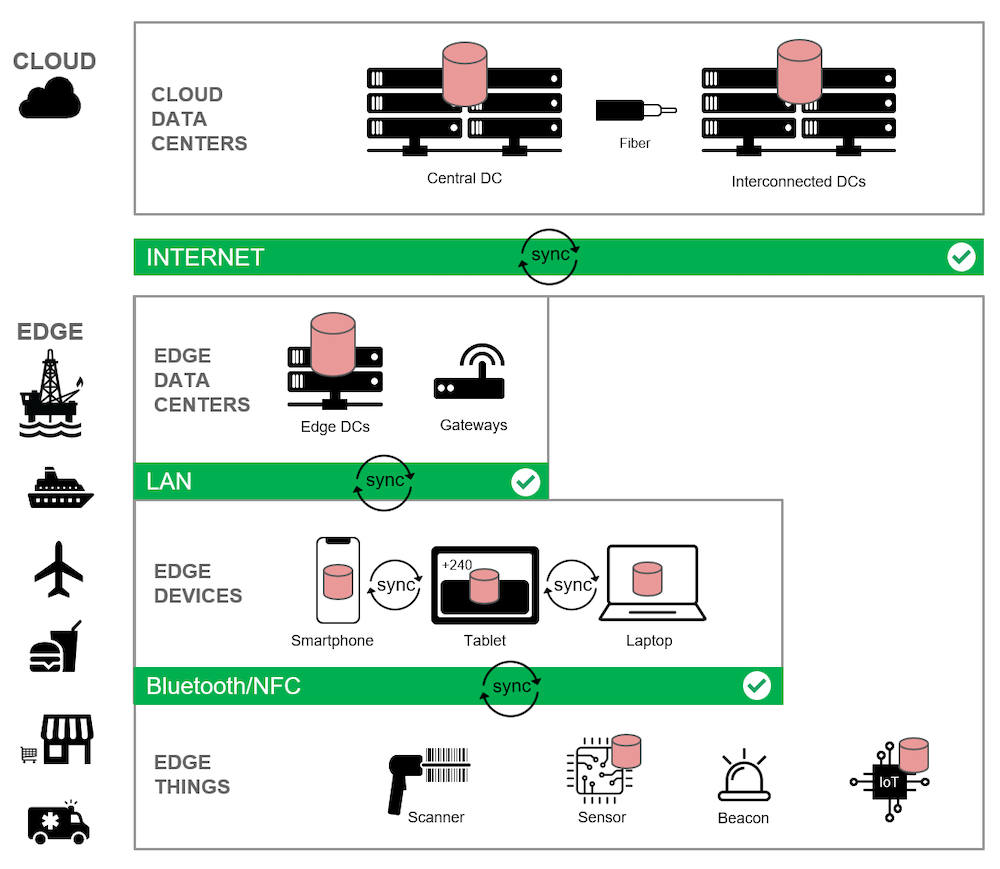
“Edge Computing Architecture: Examples …” from www.couchbase.com and used with no modifications.
Building effective edge computing solutions requires thoughtful architectural design that addresses the unique challenges of distributed processing. Unlike centralized cloud architectures, edge systems must function across heterogeneous environments with varying computational capabilities, connectivity options, and physical constraints. A well-designed edge architecture balances local autonomy with centralized management, creating systems that are both powerful and maintainable.
How Data Flows From Devices to Edge
The journey of data in an edge computing environment typically begins with local collection and initial processing. Devices gather information through sensors, cameras, microphones, or user interactions, performing basic filtering and normalization before passing data to edge nodes. This initial processing often includes format conversion, time-stamping, and basic validation to ensure data quality before further analysis.
Communication between devices and edge nodes employs various protocols optimized for different requirements. Low-power sensors might use protocols like MQTT or CoAP designed for minimal bandwidth usage, while video systems leverage protocols that handle high-throughput streaming efficiently. Many edge environments include protocol translation capabilities that create standardized data streams from diverse inputs, simplifying downstream processing while accommodating a wide range of devices.
Edge-to-Cloud Communication
Most edge computing implementations maintain connections to cloud resources, creating a hierarchical data processing architecture. These systems intelligently determine which data should remain local and which should flow to the cloud, based on factors including business value, privacy requirements, and processing needs. The resulting selective synchronization dramatically reduces bandwidth requirements while ensuring important information reaches centralized systems.
Edge-to-cloud communications typically implement store-and-forward mechanisms that maintain local copies of data until successful transmission is confirmed. This approach creates resilience against connectivity disruptions, allowing systems to function during network outages and automatically synchronize when connections are restored. For mission-critical applications, these mechanisms ensure data integrity even in challenging network environments.
Processing and Analytics at the Edge
Modern edge computing platforms support sophisticated analytics capabilities previously available only in data centers. Advances in hardware efficiency have made it possible to run complex machine learning models, computer vision algorithms, and real-time analytics at the edge. These capabilities enable autonomous decision-making based on local data, dramatically reducing response times for critical applications.
Edge analytics typically employ models trained in the cloud but deployed locally for inference. This approach leverages cloud resources for the computationally intensive training process while performing the actual analysis at the edge. The resulting systems combine the sophisticated capabilities of cloud-based AI with the responsiveness of local processing. As edge hardware capabilities continue advancing, even more complex analytics will migrate from cloud to edge environments.
5 Steps to Implement Edge Computing in Your Organization
Successfully implementing edge computing requires a systematic approach that addresses both technical and organizational considerations. Organizations that rush into edge deployments without proper planning often create fragmented systems that increase complexity without delivering full benefits. Following a structured implementation process helps ensure edge initiatives deliver maximum value while integrating smoothly with existing infrastructure.
1. Identify Your Edge Use Cases
Begin by identifying specific business problems that edge computing can solve more effectively than cloud or on-premises alternatives. The strongest edge use cases typically involve time-sensitive processing, bandwidth constraints, or operational requirements for local autonomy. Prioritize opportunities where edge computing delivers clear, measurable benefits rather than implementing edge technology for its own sake.
Engage stakeholders from both business and technical teams during this identification process. Business units understand the operational challenges and opportunities, while technical teams can assess feasibility and integration requirements. This collaborative approach ensures edge initiatives address real business needs while remaining technically viable within your organization’s constraints.
2. Select the Right Edge Hardware
Edge hardware selection requires balancing processing capabilities, power requirements, environmental considerations, and cost constraints. Remote locations with limited power may require energy-efficient systems, while applications with intensive processing needs demand more powerful hardware. Consider lifecycle management as well—edge devices often remain deployed for years in locations where replacement is difficult or expensive.
For more insights into emerging risks, check out the 2026 cybersecurity threats.
Standardization simplifies management but may require compromises in optimization for specific use cases. Many organizations adopt a tiered hardware strategy with standardized platforms for common requirements and specialized equipment for unique needs. This balanced approach maintains manageability while providing appropriate resources for each application.
For those interested in emerging technologies, exploring the best AI startups to watch can provide insights into innovative solutions that complement standardized strategies.
3. Choose Edge Software and Applications
Edge software platforms provide the runtime environment, management capabilities, and development tools for edge applications. Leading platforms offer features including device management, secure communications, data synchronization, and analytics capabilities. When selecting platforms, consider compatibility with your existing cloud infrastructure to ensure seamless integration between edge and centralized systems.
Application development for edge environments presents unique challenges compared to traditional cloud or on-premises development. Edge applications must function with limited resources, unreliable connectivity, and potentially harsh physical environments. Development frameworks specifically designed for edge computing help address these challenges by providing tools for efficient resource utilization, offline operation, and secure communications.
4. Plan Your Network Architecture
Network architecture becomes critically important in edge deployments, particularly for applications that require communication between edge nodes or with cloud resources. Consider bandwidth availability, connection reliability, and security requirements when designing network infrastructure. Many environments benefit from redundant communication paths that maintain connectivity even when primary networks experience disruptions. For a deeper understanding, explore what is edge computing and its impact on network design.
Local networking within edge environments often employs different technologies than connections to broader infrastructure. Industrial environments might use deterministic networks like Time-Sensitive Networking (TSN) for local communications while connecting to enterprise systems via standard Ethernet or cellular networks. This hybrid approach optimizes each network segment for its specific requirements.
5. Implement Security Measures
Edge computing introduces unique security challenges by distributing processing across many physical locations, often in environments with limited physical security. Comprehensive edge security requires protection at multiple levels: physical device security, secure communications, access controls, and data protection. Implement defense-in-depth strategies that maintain security even if individual measures are compromised.
Edge Computing vs. Cloud Computing: Finding the Right Balance
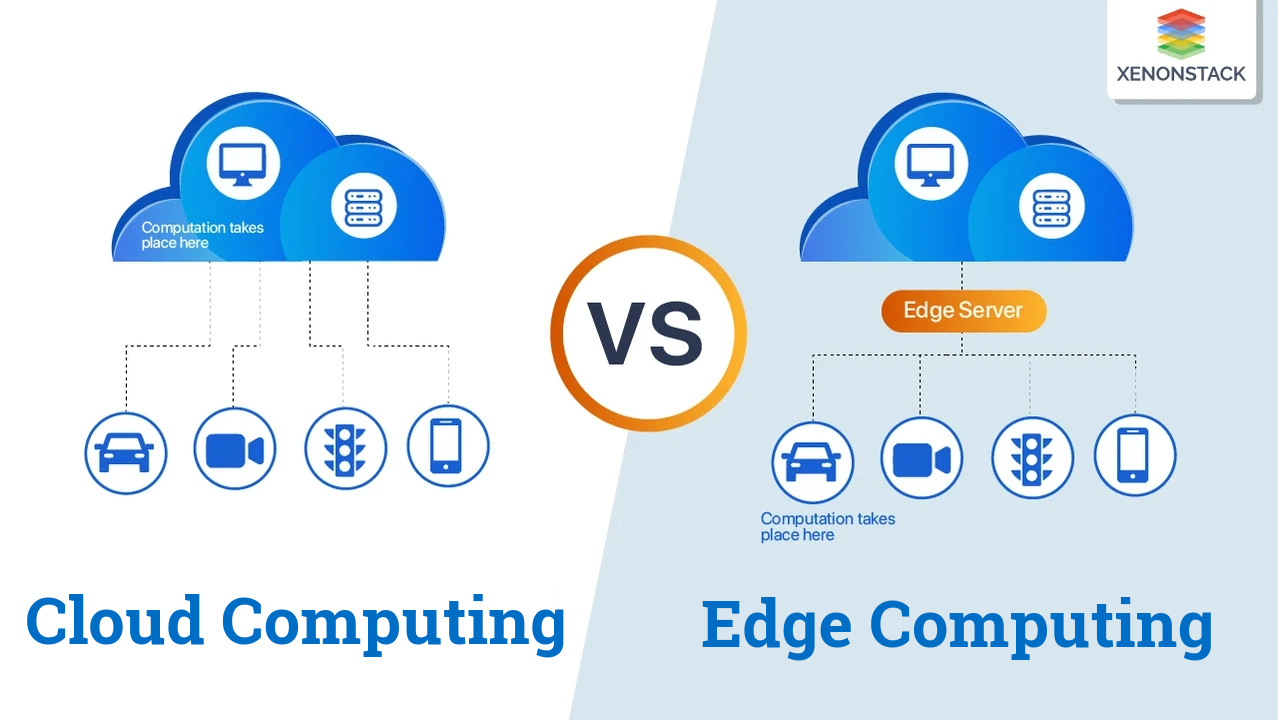
“Cloud Computing vs Edge Computing | 8 …” from www.xenonstack.com and used with no modifications.
Rather than viewing edge computing and cloud computing as competing approaches, forward-thinking organizations recognize them as complementary technologies with different strengths. Edge computing excels at local, time-sensitive processing with minimal latency, while cloud computing provides virtually unlimited scalability for complex analytics and long-term storage. The most effective architectures leverage both approaches, creating systems that combine responsive local processing with powerful centralized capabilities.
The optimal balance between edge and cloud varies significantly between industries and applications. Manufacturing environments might process 90% of data locally, sending only aggregated results to the cloud. Conversely, consumer applications might perform basic processing at the edge while leveraging cloud resources for personalization and advanced features. Understanding the specific requirements of each use case allows organizations to design architectures that maximize benefits while minimizing costs.
When to Use Edge Computing
Edge computing provides clear advantages for applications requiring real-time processing, bandwidth efficiency, or autonomous operation. Time-critical systems that must respond in milliseconds benefit tremendously from local processing that eliminates network latency. Similarly, applications generating massive data volumes achieve significant cost savings by filtering and processing data locally before transmission.
Privacy-sensitive applications also benefit from edge architectures that keep personal or confidential information local. Healthcare devices can extract insights from patient data without sending raw information to central systems. Retail analytics can count customers and analyze behavior patterns without capturing identifiable images. These approaches maintain valuable functionality while enhancing privacy protection.
Environments with unreliable connectivity represent another clear use case for edge computing. Remote industrial facilities, transportation systems, and field operations all benefit from local processing capabilities that maintain functionality during network disruptions. The operational resilience provided by edge computing often justifies the investment even when other benefits are secondary.
When Cloud Still Makes More Sense
Despite edge computing’s advantages, many applications still benefit more from cloud-based approaches. Applications requiring massive computational resources for periodic processing often achieve better economics in the cloud, where resources can scale on demand rather than requiring permanent local infrastructure. Similarly, applications needing access to vast datasets benefit from centralized storage that would be impractical to distribute to edge locations.
Development and deployment considerations may also favor cloud approaches for certain applications. Cloud environments typically offer more sophisticated development tools, simpler deployment processes, and more extensive third-party integrations. For applications without strict latency or bandwidth requirements, these practical advantages may outweigh the theoretical benefits of edge deployment.
Hybrid Approaches That Combine Both
Most real-world implementations adopt hybrid architectures that combine edge and cloud processing based on specific application requirements. These systems perform time-sensitive processing locally while leveraging cloud resources for deeper analytics, long-term storage, and cross-site coordination. The resulting architectures deliver the responsiveness of edge computing and the power of cloud platforms, creating systems greater than the sum of their parts.
The Future of Edge Computing
Edge computing continues evolving rapidly as hardware capabilities increase and development tools mature. Current trends point toward increasingly powerful edge devices running sophisticated workloads that previously required centralized infrastructure. As artificial intelligence becomes more efficient and hardware acceleration more powerful, edge systems will support increasingly complex real-time analytics while maintaining the latency and bandwidth advantages that define edge computing.
Integration With 5G Networks
The rollout of 5G networks creates powerful synergies with edge computing by providing high-bandwidth, low-latency connectivity between edge nodes and mobile devices. This combination enables new classes of applications that leverage both edge processing and mobile connectivity. Augmented reality, autonomous vehicles, and immersive experiences all benefit from the combination of local processing and high-performance wireless networking that edge computing and 5G together provide.
AI and Machine Learning at the Edge
Artificial intelligence capabilities are migrating rapidly from cloud data centers to edge devices, enabled by more efficient algorithms and specialized hardware. This transition allows sophisticated analysis to occur locally without requiring cloud connectivity. Edge AI applications range from computer vision systems that detect manufacturing defects to predictive maintenance algorithms that identify potential equipment failures before they occur. These capabilities dramatically expand what’s possible at the edge while maintaining the core benefits of local processing.
Edge Computing’s Role in Smart Cities
Smart city initiatives represent one of the most promising applications for edge computing at scale. City-wide deployments of sensors, cameras, and connected infrastructure generate enormous data volumes that would overwhelm centralized systems. Edge computing enables real-time responses to changing conditions—adjusting traffic signals based on current flows, optimizing energy distribution during peak demands, or coordinating emergency services during incidents. These applications demonstrate how edge computing enables intelligence and autonomy in physically distributed systems.
Frequently Asked Questions
As organizations explore edge computing implementations, several common questions arise regarding costs, requirements, and practical considerations. Addressing these questions helps stakeholders develop realistic expectations and make informed decisions about edge computing investments.
How much does edge computing cost compared to cloud computing?
Cost comparisons between edge and cloud computing depend heavily on specific use cases and implementation details. Edge computing typically requires higher upfront investment in distributed hardware but reduces ongoing bandwidth and cloud processing costs. For applications processing large data volumes locally and sending only results to the cloud, edge computing often delivers lower total cost over time despite higher initial expenses.
The most significant cost advantages appear in bandwidth-intensive applications like video analytics. Processing video locally and sending only events or metadata to central systems can reduce bandwidth requirements by 95% or more. For organizations with hundreds or thousands of cameras, these savings quickly outweigh the cost of edge processing equipment.
Maintenance considerations also affect total cost calculations. Edge devices deployed in remote or harsh environments may require specialized installation and periodic physical maintenance. These operational costs should be included in comparative analyses to provide accurate total cost of ownership figures.
Can edge computing work without internet connectivity?
Yes, properly designed edge computing systems can function independently without internet connectivity. Local processing occurs regardless of external network status, allowing critical operations to continue during outages. Many edge implementations include store-and-forward capabilities that cache data locally during disconnections and synchronize with central systems when connectivity returns.
The degree of functionality maintained during disconnections depends on application design and requirements. Systems requiring access to centralized data or coordination between multiple sites may have limited capabilities when offline. However, well-designed edge applications maintain core functionality independently, using local data and processing resources to continue essential operations.
To stay ahead of potential threats, it’s crucial to understand the emerging cybersecurity risks that could impact these systems.
What security risks should I consider with edge computing?
Edge computing introduces several security challenges that require specific mitigation strategies. Physical security represents a primary concern, as edge devices often reside in locations with limited access controls. These devices must be hardened against tampering, with secure boot processes, encrypted storage, and tamper-evident features. Network security also becomes more complex in edge environments, requiring secure communication protocols and careful management of certificates and credentials across distributed systems.
Data privacy considerations become particularly important when processing sensitive information at the edge. While local processing can enhance privacy by keeping raw data local, organizations must ensure appropriate controls prevent unauthorized access to edge systems. Comprehensive security strategies should address the entire edge-to-cloud architecture, providing consistent protection throughout the data lifecycle regardless of where processing occurs.
Is edge computing suitable for small businesses?
Small Business Edge Computing Assessment
When evaluating edge computing for smaller organizations, consider these factors:
- Data volume and velocity: High data generation rates increase edge benefits
- Time sensitivity: Applications requiring real-time responses benefit most
- Connectivity limitations: Unreliable internet makes edge more valuable
- Privacy requirements: Sensitive data processing may be better kept local
- Operational complexity: Available technical resources must match requirements
Small businesses can benefit significantly from edge computing when their applications align with its strengths. Retail businesses can implement intelligent inventory management and customer analytics without requiring extensive cloud infrastructure. Manufacturing operations can monitor equipment health and optimize processes using local processing that continues functioning regardless of internet connectivity. The key consideration is matching technology investments to specific business requirements rather than implementing edge computing for its own sake.
Managed edge services have made advanced capabilities more accessible to smaller organizations. These offerings provide pre-configured hardware and software platforms with simplified management interfaces, reducing the technical expertise required for implementation. Such services allow small businesses to leverage edge computing benefits without maintaining specialized expertise in distributed systems architecture.
For small businesses with limited technical resources, starting with focused implementations addressing specific pain points often proves most successful. A single edge application that delivers clear business value builds organizational confidence and expertise, creating a foundation for broader implementation as needs evolve. This incremental approach manages both financial and operational risks while still capturing edge computing’s core benefits.
How does edge computing relate to the Internet of Things (IoT)?
Edge computing and IoT represent complementary technologies that together enable intelligent, responsive systems. IoT provides the sensing and connectivity layer, gathering data from the physical world through distributed devices. Edge computing provides the processing layer, analyzing that data locally to enable immediate responses. Together, these technologies create systems that can sense, analyze, and respond to real-world conditions with minimal latency.
For businesses interested in leveraging these technologies, exploring the best AI tools can be a great starting point.
The explosive growth of IoT devices has directly driven edge computing adoption. As billions of connected devices generate unprecedented data volumes, the traditional model of sending everything to centralized clouds becomes technically and economically impractical. Edge computing provides the architectural solution to this challenge, distributing processing capability throughout the network to match the distributed nature of IoT devices themselves.
Looking forward, the relationship between edge computing and IoT will continue strengthening as devices become more intelligent. Future IoT implementations will increasingly incorporate sophisticated edge processing capabilities, creating autonomous systems that maintain core functionality independently while coordinating through cloud platforms. This evolution will further blur the boundaries between device, edge, and cloud, creating seamless computing environments that optimize processing location based on application requirements.
Edge computing is a distributed computing paradigm that brings computation and data storage closer to the location where it is needed, to improve response times and save bandwidth. This approach is particularly beneficial in scenarios where real-time data processing is crucial, such as in autonomous vehicles or smart cities.
As we move towards a more connected world, understanding the emerging risks in cybersecurity becomes increasingly important to safeguard data integrity and privacy in edge computing environments.

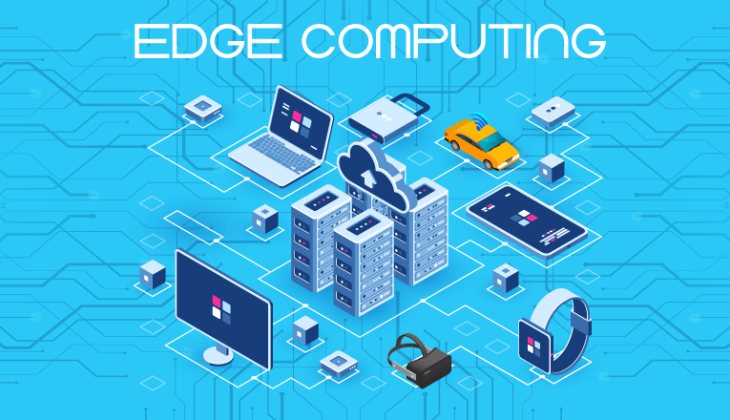
Join the Conversation